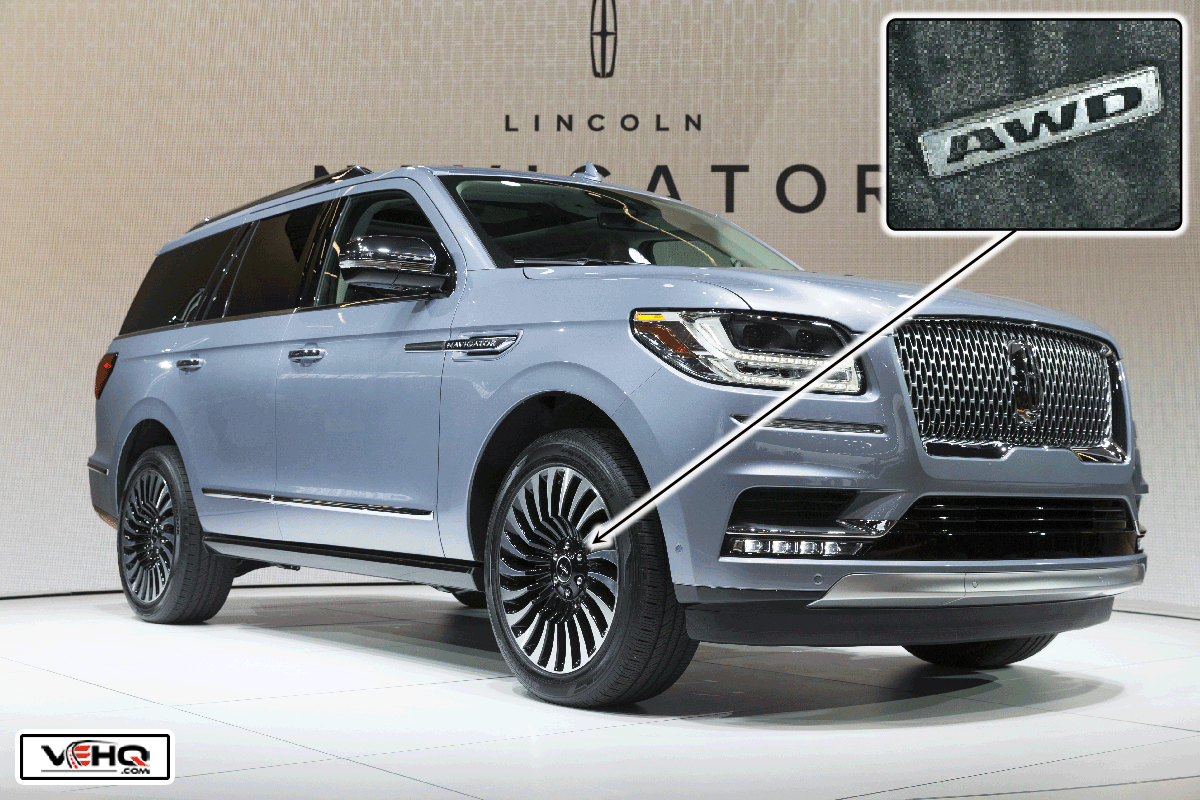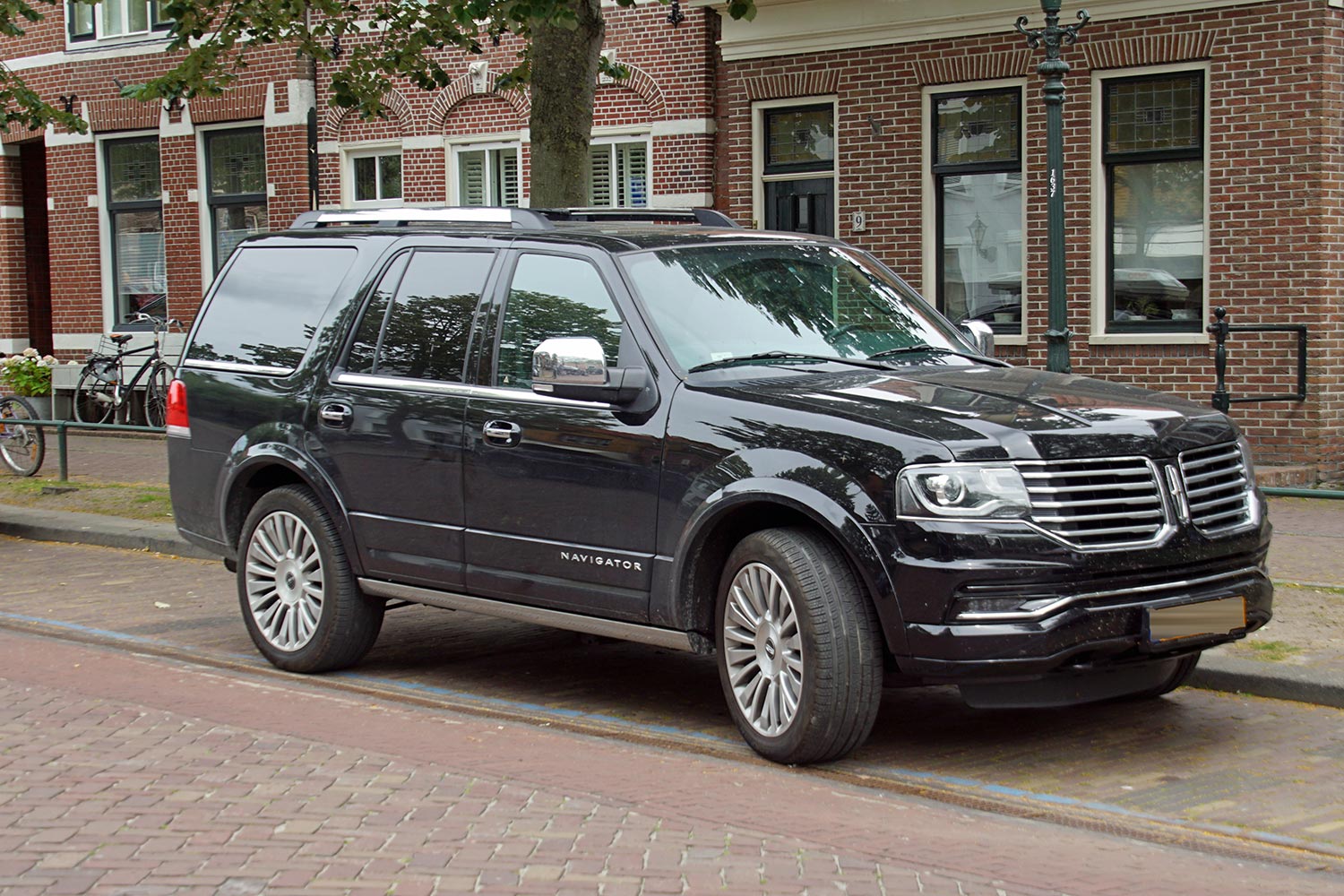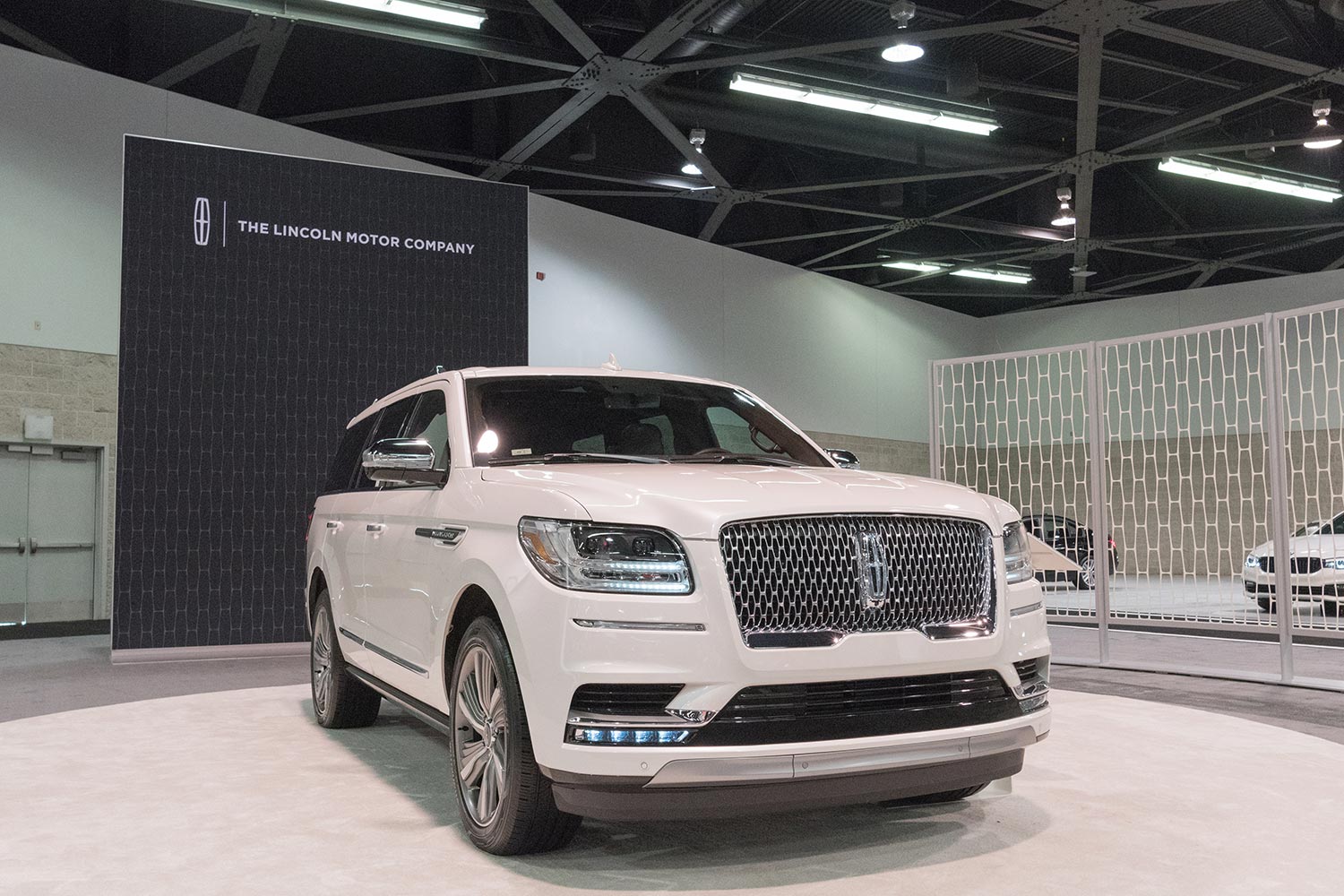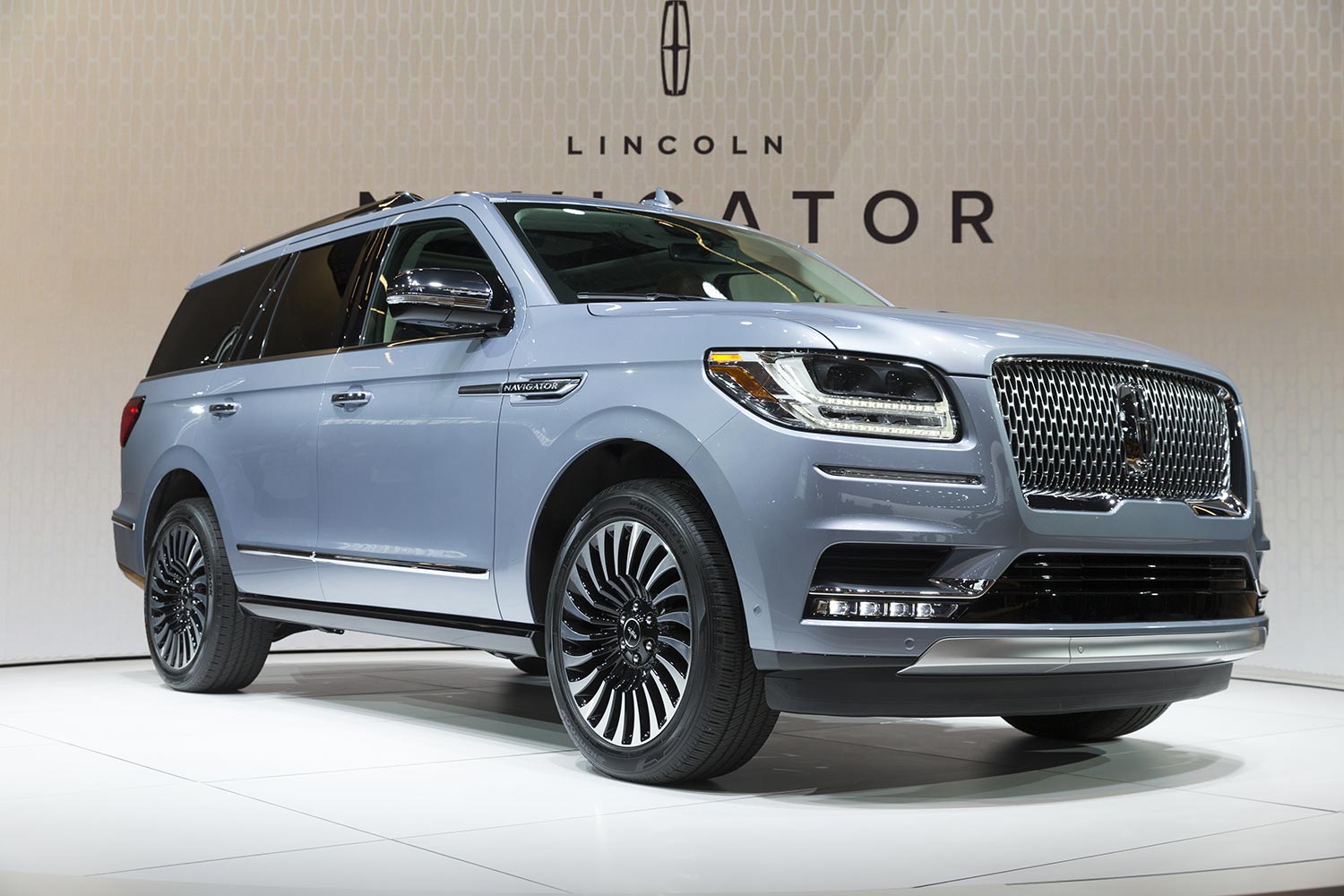One of Ford Motor Company's Lincoln division's full-size luxury SUVs is the Lincoln Navigators. The Navigator, primarily sold in North America, is the Lincoln equivalent to the Ford Expedition. But is the Lincoln Navigator an all-wheel drive? We carried out thorough research to find an answer to this question you may have.
Although it has a manual transmission and standard 4WD, an all-wheel-drive system is optional in specific Lincoln models. Regarding its drivetrain, the 4WD model is particular to the black label model and the standard model, while the reserve model has two styles, a 4WD, and a rear-wheel-drive model.
To learn more, hang on and keep reading as the following subheadings will give a detailed explanation of what AWD means and its comparison to other types of wheel drives

Lincoln Navigator
This full-size luxury SUV from Lincoln is the company's apex model. V8-powered Cadillac Escalade and Jeep Grand Wagoneer are rivals. The Lincoln Navigator has a basic model and an L version with a 9-inch larger wheelbase and much additional load capacity behind the third-row bench seat.

Seating for up to eight people is available. However, the Navigator's large 22-inch wheels sacrifice some ride quality in favor of a more stylish appearance. A 440-horsepower twin-turbo V6 is housed under the hood. In addition to a standard 10-speed automatic gearbox, the two-wheel-drive variants can tow up to a class-leading 8,700 pounds.
Although it is not the most extended Lincoln ever sold, it is the heaviest Lincoln ever produced. It is also the Lincoln with the most cargo space and the first non-limousine Lincoln with more than six passenger seats. There are no V8 engine options available in the Navigator's specifications, making it an excellent fuel-efficient large SUV.
Is The Lincoln Navigator AWD?
Transmission systems that power both front and rear wheels are known as all-wheel drive. These systems usually function in either a full-time or a part-time model.
On even the most slippery surfaces, full-time AWD systems keep you in control by delivering power constantly to all four wheels. This AWD system may improve handling on snowy and icy roads.

Part-time all-wheel-drive (AWD) systems distribute torque to one or both sets of wheels. AWD systems with part-time traction control (part-time AWD) automatically alter the power distribution to all four wheels when confronted with slippery road conditions like snow.
As for the Lincoln Navigator, the AWD is an option for people who need traction in all kinds of weather and driving conditions.
What Does Intelligent AWD Mean?
Unlike traditional all-wheel drive, intelligent AWD utilizes a sophisticated network of sensors to continuously analyze the road conditions and your vehicle's grip, enabling the system to send more torque to the most appropriate wheels.
When driving through the snowy streets, paying attention to the road conditions and adequately adjusting the power distribution to your wheels is essential.
On the other hand, this technology not only senses road conditions and adjusts the power supply in response, but it does it in a matter of seconds. Your driving circumstances are interpreted by the Intelligent AWD system, which is so advanced that it may take action before wheel slip ever occurs.
To put it another way, Intelligent AWD can detect potential problems and shift power to your wheels to assist you in maintaining traction.
Can a Lincoln Navigator Go Off-Road?

When determining which vehicles can go off-road, it is essential to remember that the individuals who purchase them have varied requirements, goals, and desires. Choosing an off-road vehicle or SUV that works for one individual may not work for another since there is no universal answer.
It is also possible to install extra components and equipment from the manufacturer or aftermarket vendors to further personalize an off-road-ready vehicle.
The Navigator is not designed for off-roading, instead, it's a luxury sedan for transporting many passengers and their belongings in style and comfort. They are seldom seen beyond the unpaved road leading to the lake cottage.
Does Lincoln Make a Rear-wheel Drive Car?

An automobile with just rotational propulsion at the rear wheels is described as having a rear-wheel-drive powertrain. Since the end of the twentieth century, most vehicles have either front-wheel, four-wheel drive, or even an all-wheel-drive layout.
While Ford's front-wheel-drive design is standard throughout the Lincoln lineup, Lincoln's sole current rear-wheel-drive vehicle is the Navigator SUV.
What is Better, 4WD or AWD?
In an all-wheel-drive (AWD) vehicle, each of the four wheels can obtain traction without relying on the other two. AWD is constantly on, but 4WD may be toggled on and off as needed, and here is where the two systems vary. 4WD is often seen on trucks, although AWD is more commonly used in automobiles and SUVs.
All-wheel drive may be introduced to a vehicle by installing three gearboxes in various portions of the vehicle. The front, middle, and back of your automobile have three different gearboxes, which enable each of your four wheels to gain traction independently of the others, resulting in better grip and handling in all kinds of weather.
Advantages and Disadvantages of 4WD and AWD
Four-wheel drive, or 4WD, is commonly seen on trucks for heavy-duty hauling and other job operations. Some drivers in certain terrains often have 4WD choices:
- 4WD Low for demanding towing duties, and
- 4WD High for rough terrain necessitating proper wheel balancing between the inner and outer wheels.
Both AWD and 4WD have their advantages and disadvantages, and it is up to you to decide which is best for your situation. Improved handling may be achieved with either AWD or 4WD. But when it comes to difficult off-road situations, there is no replacement for 4WD.
Although 4WD systems are now available in premium trucks and SUVs, at their core, they are intended for toughness and optimum grip when users need it most, so they are the best option for challenging terrain.
Is AWD or 4WD Better in Snow?

A vehicle's make and model are more important than the powertrain used. If you need a truck for transporting stuff around and need to go through the snow, then 4WD is the best option. You'll need a vehicle with all-wheel drive to get about town and enjoy snowy drives.
However, when you don't need the extra traction, it becomes incredibly inefficient for trucks to have. You'll always want all-wheel drive or four-wheel drive in the snow, no matter what you plan to do with the vehicle.
In low-traction circumstances over ice, 4WD may provide a little additional grip, but it does not affect the vehicle's turning or braking skills. Therefore it is crucial to keep this in mind while considering 4WD.
To reiterate, no matter what kind of drive system an automobile or truck has, it cannot defy the laws of physics. Even the heaviest of 4WD vehicles may spin out of control on a patch of ice or around a slippery curve if driven without attention to the weather or road conditions. As the weather deteriorates, always slow down.
Is Lincoln LS an FWD?
To compete with the BMW 5-series, Lexus created the LS, a sporty rear-wheel-drive sedan. While the ride is solid and well-controlled, it is not like a classic Lincoln in terms of handling or agility. Faster than the 3.0 liter V6 isn't the point.
The 3.9-liter V8 is more powerful than Ford's smoothest automatic gearbox. The space available for the knees in the back is limited. Sporty driving isn't what you'll get out of this car. It's a smooth, controlled ride. Is there any stability control?
So much so that its chassis construction is shared with the Jaguar S-Type. The Lincoln LS is a rear-wheel-drive vehicle, much as Mercedes-Benz, BMW, and Jaguar. RWD aficionados favor it over front-wheel drive because of its better driving qualities.
Why Was The Lincoln LS Discontinued?
The Lincoln LS was a derivative of the Jaguar S-Type, developed by Ford alongside the Jaguar X-type. Ford likely had preparations in place for a new platform and already had aspirations to sell Jaguar and Land Rover by the mid-2000s.
Retrospectively, it was clear that Ford was adopting a new design concept and discarding its rear-wheel-drive platforms, which included the Panther automobiles.
The LS did not share a platform with any other Ford vehicle. Therefore it is not unexpected that it was canceled to cut links with Jaguar.
Lincoln ceased manufacturing the LS model with a manual gearbox after 2,331 were produced. Motor Trend and Car and Driver showed that a V8-powered LS could accelerate from zero to sixty miles per hour in the low seven-second range, but V6 vehicles were up to two seconds slower in the same test.
To Wrap Up
There has been a lot said about the Lincoln Navigator in this article. It is a high-end SUV with some impressive features. The Lincoln Navigator comes standard with front-wheel drive, but buyers may also choose for all-wheel drive.
For more on AWD trucks, read these recommended articles:
